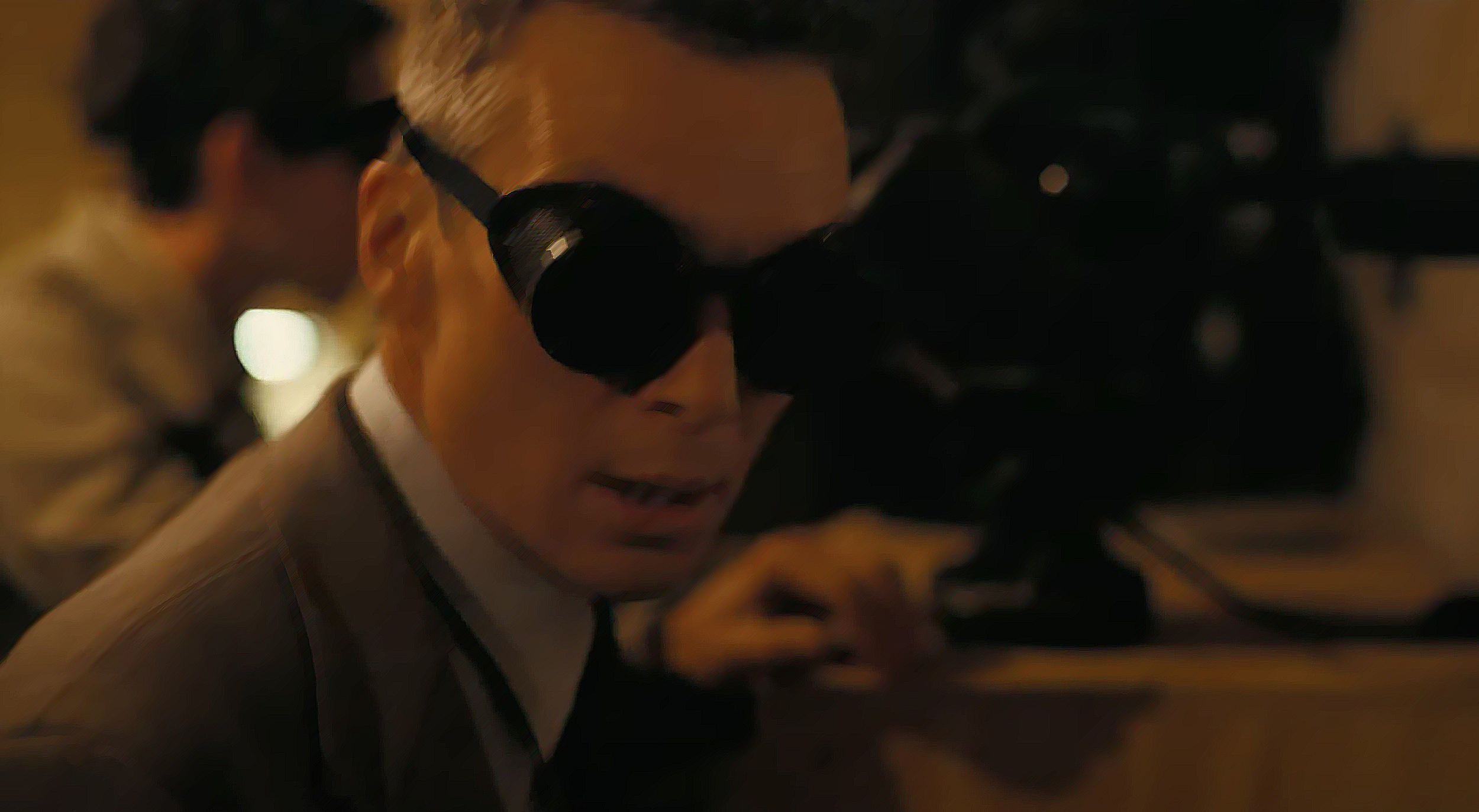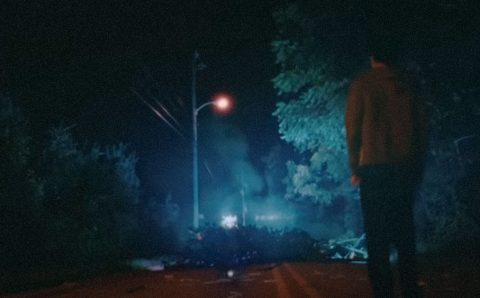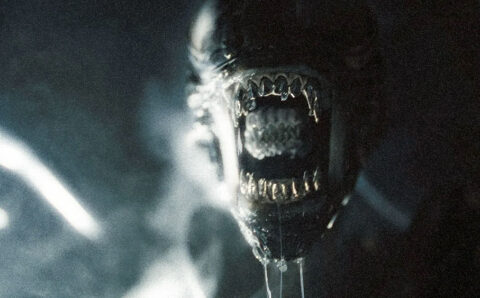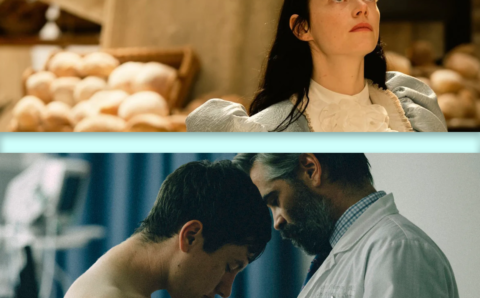Oppenheimer is finally available digitally, which means one of the most celebrated narratives about the film’s production is about to collapse.
The enduring sell for seeing the film in theaters this past summer was the viral note that director Christopher Nolan successfully avoided CGI when recreating the atomic bomb’s test explosion. IMAX brands itself on single scenes like this, justifying the premium fee and extra travel time to find an open screen. Media rounds confirmed, Nolan and visual effects supervisor Andrew Jackson had done the impossible and unleashed something so devastatingly mammoth that crowds might cry.
Now, we’ve seen it. Aluminum powder, magnesium, gasoline, and propane gave Nolan’s explosion what punch it had. Though the close-ups of churning fire are fitting recreations of actual test footage from Trinity, the wide shots, and lack of even wider ones, may age the sequence into irrelevance. The fabled cinematic explosion could have ranged anywhere from a miniature’s to a full-fledged set’s. That’s a problem.
The loss of perspective in Oppenheimer’s first of two climaxes is as aphoristic as it is actuarial, though the expression assumes that at some point, Nolan had it to then lose. Nolan has made a career out of a singular, anti-CGI religiosity, and fans have prayed alongside. Marvel detractors could always relish in the success of the gritty Batman films Nolan so capably helmed. The kaleidoscopic lights through the windows of Interstellar‘s spacecraft were real and on physical loops, shadows and colors churning. Nolan and VFX supervisor Paul Franklin mounted the twisting hallway in Inception and spun at scale like a cement truck. If fans’ takeaway was that these scenes worked well, the implied premise was that their impact was rooted in physical structures over digital ones.
It’s not from U.S. or international history that we’ll find proof the premise is specious for Oppenheimer, but from film history. When a spaceship passes from top of frame to bottom in A New Hope, we know that what follows, bigger, must be obscenely huge. Godzilla films operate through the same distinctions, however campily, the models of cities crafted to create an illusion of reality and give mass to the monsters hanging above it. Guillermo Del Toro kept his cameras low and angled up at the “kaijus” in Pacific Rim to more success. Peter Jackson mastered the toying trickery necessary to make Ian McKellan’s Gandalf look like a giant next to Elijah Woods’ Frodo. Jon Favreau did it with a smaller budget for Elf.
In The Dark Knight, perhaps Nolan’s most consistently celebrated film outside of Oppenheimer, the Joker sets a hospital ablaze. Nolan found an abandoned one and secured the clearances to actually demolish it. The villain’s presence outside the demolition keeps the explosion impressive by contrast to his small frame, and a wide aerial shot of the hospital crumbling closes with a getaway bus nearby. Physical and cinematographic perspective is Film 101, and Nolan knows it well — which makes the bizarre lack of span and relativity in the final cut of Oppenheimer‘s only set piece all the stranger.
Nolan defends his dubious decisions elsewhere in the film as attempts to capture the subjective experience of Robert Oppenheimer in limited, third-person narration. If the same applies to the explosion, it’s at great cost.
Like the film’s strictly Western positioning and its lack of mention of the Americans affected by the Manhattan Project’s use of eminent domain and abandoned fallout, missing perspective during the explosion severely diminishes the impact of the film’s thematic, cautionary aims, turning Boomers into chicken littles and unwittingly validating cynical pop culture dismissives like “WWII Porn.” An incomplete telling to young eyes, the film’s “fulcrum” scene, as Nolan calls it, stands to lose the very generations who may have benefitted the most from a reframing after all the overexposed war storytelling they’ve seen serialized and stakes they’ve seen monetized, but only with rare exception literalized from the Cold War on. We needed to see how devastating and world-ending the bomb could be, or else the trials of the remaining runtime of the movie begin to feel as black and white as the images themselves, as do the present-day warnings.
Don’t blame Marvel. Two decades’ worth of CGI explosions isn’t what blunted our litmus test for danger. What Nolan was really competing against was the widely seen historical footage of real mushroom clouds, including video from Japan. The footage is instant and existentially devastating. Nolan’s isn’t.
Solutions were more than theoretical — distant drone shots to get the comparatively minuscule bunkers in frame, or a character’s insistence in placing a perspective-engaging anything at the foot of the bomb’s tower as a forgivable and necessary creative liberty.
But creativity blinks out of existence at inconvenient times for Nolan. He unironically wrote into the best action sequence in The Dark Knight the line, “I didn’t sign up for this,” and his ultimate, hours-culminating exchange between Bane and Batman in The Dark Knight Rises tips off with Christian Bale’s dead-pan delivery of “I came to stop you.”
Film bros’ favorite literalist even could have been more literal in Oppenheimer. Even splicing in actual footage would have been far more compelling, and far more defensible. The press tour citing “remastered footage” writes itself. Instead, Nolan gives us only other senses: a wash of silence and the fictionalized touch of the shockwave wind — both ironically more “Hollywood” than creative splicing or selective CGI.
Yes, CGI could have helped. Spielberg in Jurassic Park, with the guidance of animator Steve ‘Spaz’ Williams among others, mixed mechanical puppetry with limited CGI, cast in shadows for a blend of genuine terror. No such composed, hybridized, limit-conscious threat exists in Oppenheimer. Frankly, no threat does except the possibility that Robert Oppenheimer himself remain underappreciated for his earnest nuance and post-war politics. The four-a-half-star movie sacrificed its better, last half for realism, and traded its lasting reach for present anti-tech zealotry.
There are shades here of George Lucas on the set of Episode I, with few apparently ready to take on Nolan’s ego. Even if crew had mounted an attack successfully, who would have the ambition to attempt a better construction than Nolan’s — and after all, isn’t the movie incredible as is? It is. It’s also imperfect.
On small screens internationally now, the lonely explosion so central to a feeling of genuine consequence will sputter like a firecracker, mystifying living rooms as to how the scene ever justified the IMAX tag. It’s the absolute last thing we need and a gigantic failure for a filmmaker with thematic and moral reach like Nolan’s.
But hey, at least he didn’t use CGI.
Ryan Derenberger is a freelance journalist and editor, a Journalism and AP Language teacher at Whitman HS in Bethesda, MD, and the founder of 'The Idea Sift.' He also serves on the board of directors for student journalism nonprofit 'Kidizenship.'












